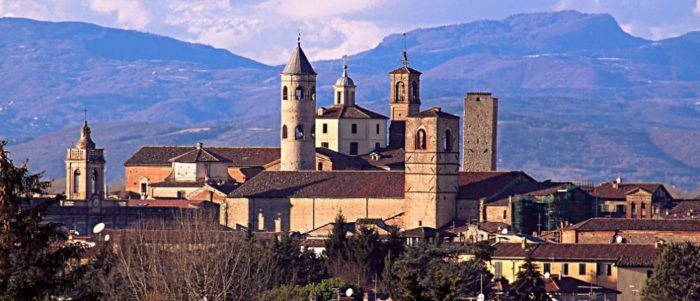(at 15min)
A flourishing town of Roman origins, the ancient Castrum Tifernum is today the real industrial engine of the Upper Tiber Valley, and stands out for its production of style furniture, cartography and metalwork. The city was deeply marked by the lordship of the Vitelli family, who governed it from the middle of the 15th century until the end of the 16th century, building a multitude of elegant palaces. The visit starts from Piazza Matteotti, the historical heart of the village, in whose eastern side there is the Palazzo Vitelli and in the western side the Palazzo del Podestà (that towards Piazza Matteotti has a baroque facade of 1686 and towards Corso Cavour a beautiful monumental side, all in stone, and with austere gothic shapes). Continuing on Corso Cavour you reach Piazza Gabriotti, where there is the Palazzo Comunale of 1334 (gothic building with an imposing atrium, with sturdy cross vaults). The left side of the Duomo (dating back to the year one thousand, but extensively remodeled in later times) follows: the left side is in Gothic style and the façade has baroque shapes. Below the cathedral there is the large Lower Church, which houses the stone sarcophagus containing the relics of Saints Amanzio and Florido (the latter is the patron saint of the city), and which houses the Cathedral Museum (with precious works of art that make up the cathedral’s treasure and the treasure of Canoscio. Opposite the side of the cathedral stands the Bishop’s Palace and the adjacent Civic Tower (m high, from which you can enjoy a magnificent view of the historic centre). In Via della Cannoniera there is Palazzo Vitelli alla Cannoniera (1521, whose rear part is adorned with valuable graffiti by Vasari), seat of the Municipal Picture Gallery, which houses an important collection of paintings (containing works by Ghirlandaio, Signorelli and Raffaello). The visit ends in Piazza Garibaldi, where you can admire the Palazzo Vitelli in Sant’Egidio, the most sumptuous palace of the seigniory.
On the hill above Città di Castello stands the Sanctuary of the Madonna del Belvedere (1669, interiors with grandiose baroque stuccoes). At 3,5 km from the town there are the Terme di Fontecchio, a thermal spa of the nineteenth century, known for its mud and its alkaline-sulphur waters.
Alberto Burri, one of the greatest Italian exponents of modern art was born and lived in Città di Castello. The master has donated over 250 works to the city, protected by the Burri Foundation, and exhibited at Palazzo Albizzini and the former tobacco drying rooms.

